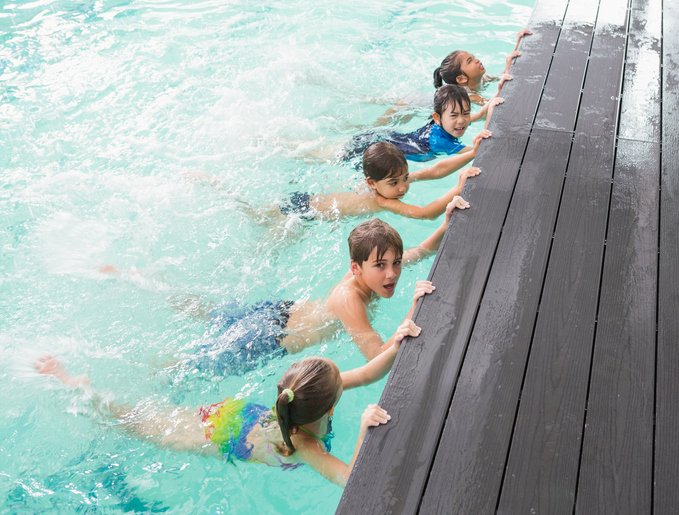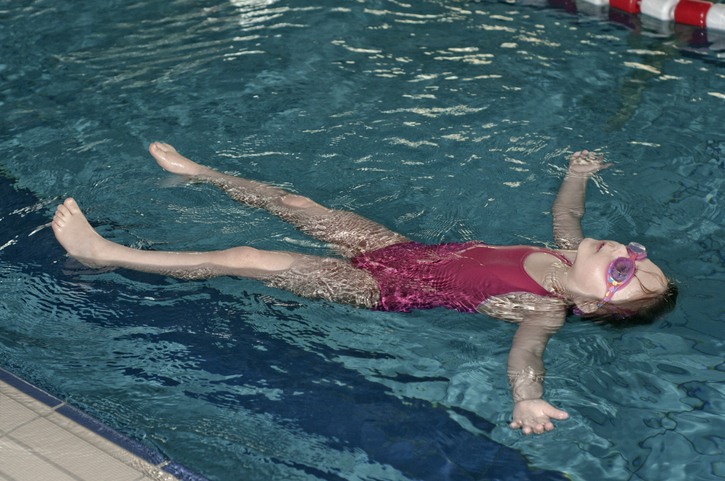Drowning Statistics in the United States
Parents are no strangers to drowning statistics this time of year. Here in Florida, and I assume elsewhere, especially in areas where aquatic activities are popular, the media starts bombarding the masses with these alarming factoids. The unfortunate regularity and severity of drowning occurrences is exposed on the news, through radio commercials, and even on highway billboards. It is certainly well advertised that fatal drowning events are the second leading cause of death for people between ages 1 and 14 years old and the leading cause of accidental death for children under 5. For young children, most of these drowning events occur in home swimming pools. These scary realities often lead to a logical course of action: enrolling kids in formal swimming instruction.
Fighting the Epidemic with Swimming Education
With limited research, it quickly becomes clear that there are many companies and organization to choose from that offer different iterations of aquatic instruction. From community pool group lessons to private instruction offered through mobile companies like Sunsational Swim School to water survival academies, it could be an overwhelming task to choose what program best fits the needs of your child. As a former instructor from summer camps, the YMCA, a survival swim school and a current private instructor for Sunsational, here I am going to outline the major differences between survival swim lessons versus traditional swim lessons to help make informed decisions regarding your child’s aquatic education.
Survival Lessons: What You May See
If you unexpectedly fell into a body of water, would you know what to do? This question is the basis of survival swim lessons. The main objective of this type of instruction is infant self-rescue, and children can start as young as 6 months old. To an observer, it may look like the majority of time during these lessons is spent practicing different versions of back floats, whether it be pushing backwards off the pool wall into a float, rolling over from a face-down prone position, or jumping into the pool and flipping over. This is because the curriculum of water survival programs is a series of progressions that lead up to one main life-saving skill: being horizontal on your back. This enables children to roll over to rest, call for help, or catch their breath while swimming to safety. The ultimate goal is to so deeply ingrain these skills that they become automatic responses to surprising, and perhaps frightening, water situations. Some programs even have students practice these skills in their street clothes to make the scenario more realistic.
What You May NOT See
You might not see much of the stereotypical kicking or bubble blowing in survival lessons, contrary what you may expect from a swimming class. In fact, there are different schools of thought regarding teaching children bubble-blowing at all. Some survival schools argue that they prefer to teach kids what to do before putting their face in the water (taking a deep breath), not after their face is submerged. The argument is that swimmers that have taken a deep breath will not feel starved for air, and therefore not suck in water in a panicked attempt to take a breath.
So, as you can see, the basis of survival lessons is simple, but these classes may look different than you’d expect. Once a few fundamental skills are mastered, the next step in the progression is to focus on stroke technique. This next step more closely resembles traditional swim lessons.
Survival Swim Lessons vs Traditional
Like survival swimming lessons, traditional swim lessons promote water safety, but with a different approach than isr instructors. In general, students graduate through the learn to swim levels by first becoming comfortable in the water, then by learning basic swimming skills, and then finally by developing their strokes. For example, you will see your child practice back floats in a traditional lesson, but they are sprinkled amongst a variety of other swimming skills, such as kicking, streamline position, front crawl, backstroke, etc. While practicing the beginner crawl, students may still learn to roll onto their backs for a few seconds before flipping back over to continue to swim; which many schools call rollover breathing and it is a very important water safety skill.

After learning freestyle and backstroke techniques, students generally move onto learning breaststroke, and then ultimately butterfly. The latter end of many programs concentrates on preparing students for joining swim teams. In a nutshell, over the lifetime of traditional swim lessons, students are encouraged to first become comfortable and safer in the water and then learn correct stroke techniques to become strong and safe swimmers.
Which Method is Best?
Both traditional lessons and survival lessons are ultimately about water safety, they are just two different approaches with some overlapping components. Swimming is by no means a natural human activity- it is a skill that must be learned. It is also a skill that can save a life. Whether your family owns a pool or not, we inhabit a planet who’s surface is two-thirds water- it’s what gives earth life. From coastal communities to landlocked states, to frigid northern regions to the balmy south, swimming has become a huge part of our culture and day-to-day lives. And just like any other skills, there is no one-size-fits-all method to mastering the art. As they say, different strokes for different folks! Both water survival lessons and traditional swim lessons can be beneficial learning experiences. Knowing your child and what you ultimately want to glean out of their swimming education can help you decide what program will best suit you and your family.
At Sunsational Swim School, we provide private at-home swimming lessons to children age 6 months and up and even have a Learn to Swim Guarantee for kids 3 and up. Learn more about our private swimming lessons and get started today !
Katelynn’s bio:
Hi! My name is Katie and I am a recent graduate from the University of Miami's Master of Professional Science program in Tropical Marine Ecosystem Management. On weekdays, I am a Biological Science Technician and SCUBA diver for the National Park Service, and on weekends I share my passion for aquatic safety and swimming with my swim students! I have been leading aquatic programs for 15+ years all over the world, teaching everywhere from my home state of Connecticut, to Downeast Maine, the Florida Keys, to Catalina Island, California, and even Fiji. I now offer lessons in the Miami metropolitan area in sunny Florida. I have worked with students as young as 6 months old to as old as 60 with a wide range of physical and intellectual abilities. I am a certified waterfront lifeguard, first aid, and CPR instructor through the American Red Cross, Wilderness First Responder, a NAUI divemaster, ex-competitive swimmer and swim coach. I love sharing my passion for the aquatic environment and believe that everyone is capable of learning how to swim and be safe around the water!
ABOUT SUNSATIONAL SWIM SCHOOL
Sunsational Swim School is the 🥇 #1 rated provider of private, at-home swimming lessons in America. We have specialized swim instructors for students ages 6 months to adult, beginner to advanced. Featured on ABC, CBS, Impact 100, The List and others, Sunsational instructors have a minimum of 2 years of teaching experience, are CPR certified and insured, and have collectively taught over 302,223 lessons for more than 74,415 students nationwide!



